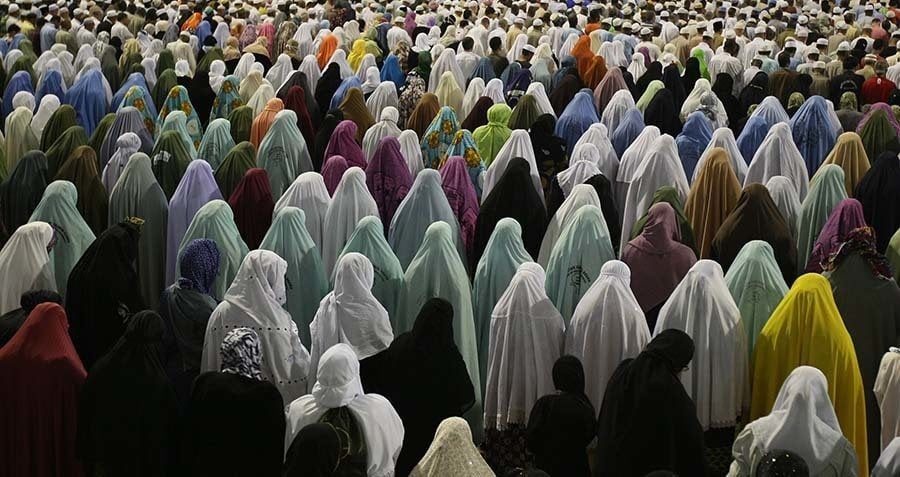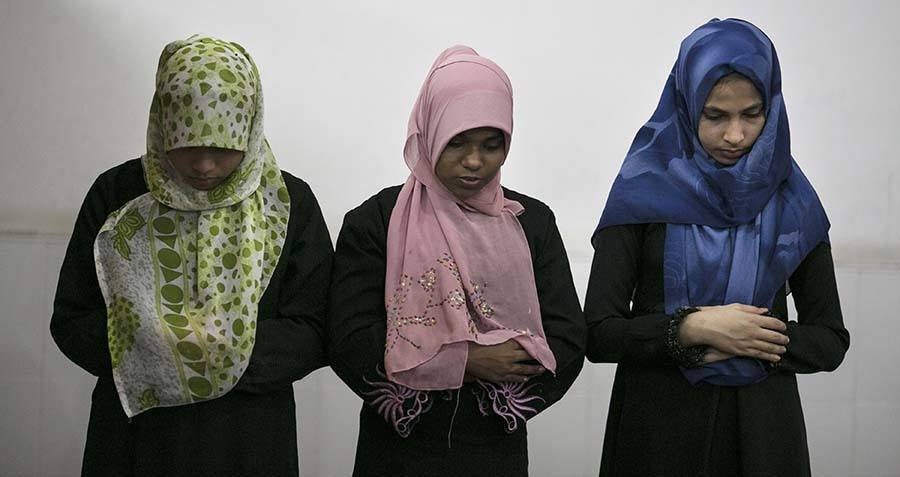Why Islam Finds Its Way Into Personal Appearance

MAHMUD HAMS/AFP/Getty Images
Unlike Christianity, which mostly deals with adherents’ spiritual lives, Islam speaks to every single area of human existence. Islam has rules for trade and for borrowing money, when to pray and when to wash, dress codes and which hand to use when you wipe (the left).
While some Islamic scholars may have gotten carried away with the rules, Muslims mostly approach the sacred and unalterable scriptures with the same flexible attitude Christians and Jews bring to their religions. This leads to wild variations in practice, as local customs seep into communities’ interpretation of Shariah.
To understand this, think about all of the Americans who believe Jesus sanctions private property or gun ownership. If you ask them where in the Bible it says birth control is wrong, you won’t get an answer; it’s just a tribal attitude that has acquired the veneer of a religious teaching over dozens of generations.
The letter of Islamic law gets massaged in the same way. There’s nothing in the Quran about women covering up head to toe in fabric, for example, and plenty of very traditional Muslim societies in Africa seem to get by just fine without it.
But in Afghanistan, Saudi Arabia, and Iran, it can be dangerous for women not to dress the part. Stories of Islamist men splashing unconcealed women with acid are very real, and some in Saudi Arabia and Iran routinely harass and sometimes arrest women who violate the prescribed “Islamic” dress code.
Ironically, nobody seems to agree on what this compulsory dress code looks like. The lightest garments are the dupatta and hijab, which are loose scarves worn over the hair and neck, but not over the face.
Iranian women often wear the chador, which is like a big black cape that runs from the hairline to the ankles and is held closed in front by the wearer’s hands, leaving the face exposed. The niqab and abaya, worn together, completely cover the woman’s body and leave only a two-inch slit for the eyes. This combination is usually worn by high-status women in Gulf States.
The burka, meanwhile, covers every inch and permits vision only through a cloth mesh over the face. This style may or may not be popular in Afghanistan – it’s hard to say because nobody there asks women for their opinions.
Why Islamic Women Suffer In Court

Pastafarian Indonesia/YouTube
Women’s legal disability in Islam is the red flag on the field where most Westerners are concerned. Whatever the local customs, and however loose the local interpretation of Islam, Muslim women are at a sharp disadvantage in almost any court proceeding held before an Islamic jurist.
While the law provides for a married woman’s care and feeding, it also sets rules for why and how much a husband may beat her. Contracts may be witnessed by two men, or by one man and two women (a woman’s testimony is worth half that of a man).
As for crime, female rape victims under most circumstances must produce four (male) witnesses to the event, or else they might get flogged for making a false accusation. If a woman is sentenced to death for a crime, Shariah will permit her savior so long as she is a virgin. That’s why some Iranian prison guards “marry” such girls the night before their executions. According to one guard who had done this:
“I could tell that the girls were more afraid of their ‘wedding’ night than of the execution that awaited them in the morning. And they would always fight back, so we would have to put sleeping pills in their food. By morning the girls would have an empty expression; it seemed like they were ready or wanted to die.”
After the execution, which might be after weeks or months of isolation in prison, the girls’ families are given a certificate of marriage so they know what happened.

Paula Bronstein/Getty Images
Even a well-intentioned law, and a unifying system which houses them, can become barbaric pending their use and interpretation. Women in Islam are officially discriminated against, given strict rules of conduct, and patronized beyond Western norms, but the enforcement of those rules depends on the culture and power structure in which these women find themselves. The enemy of women in Islam is therefore the common enemy of man: tyranny.
Next, read about these surprising perspectives on Jesus and see what life looked like in Iran before the Islamic Revolution.





